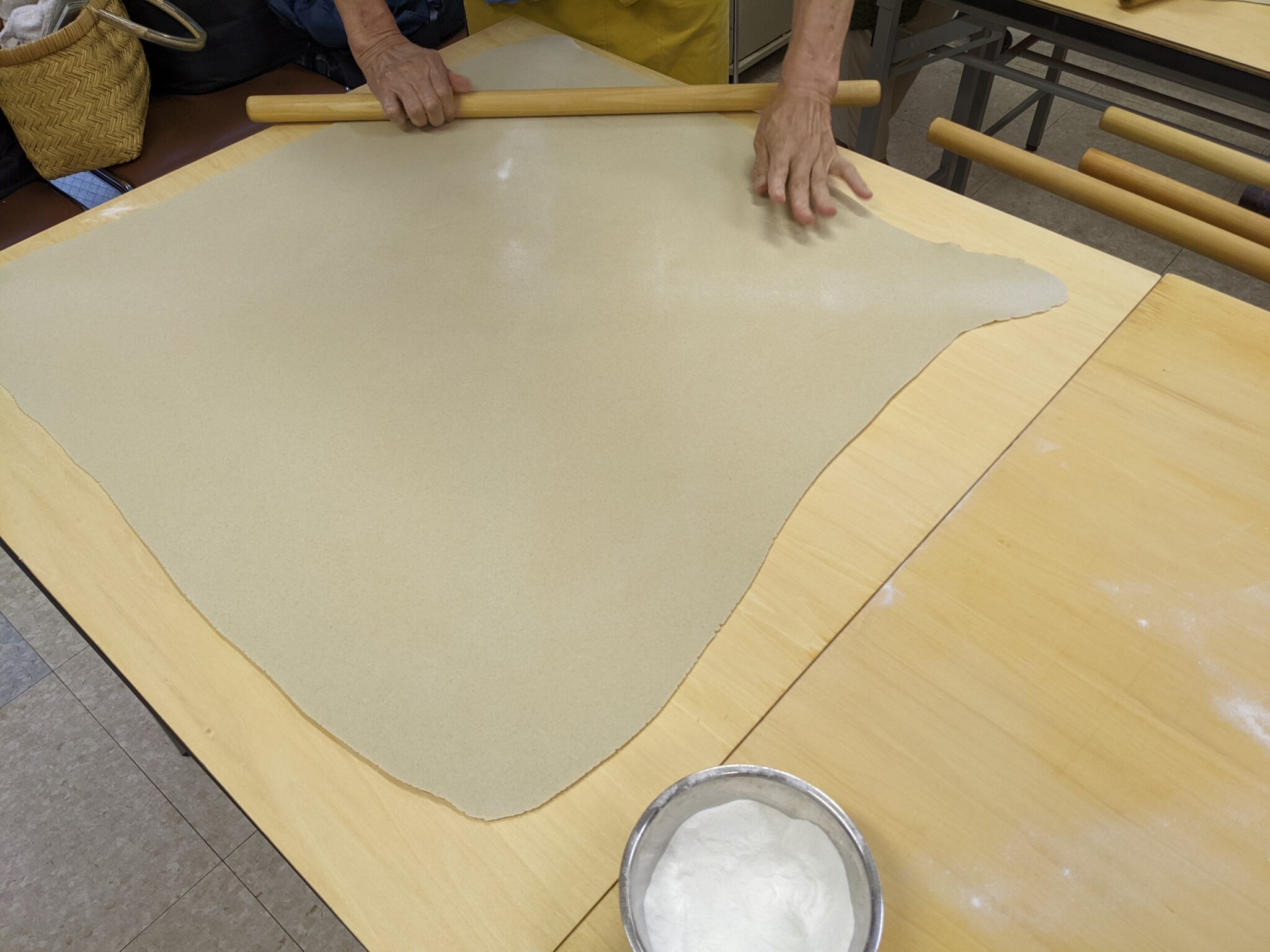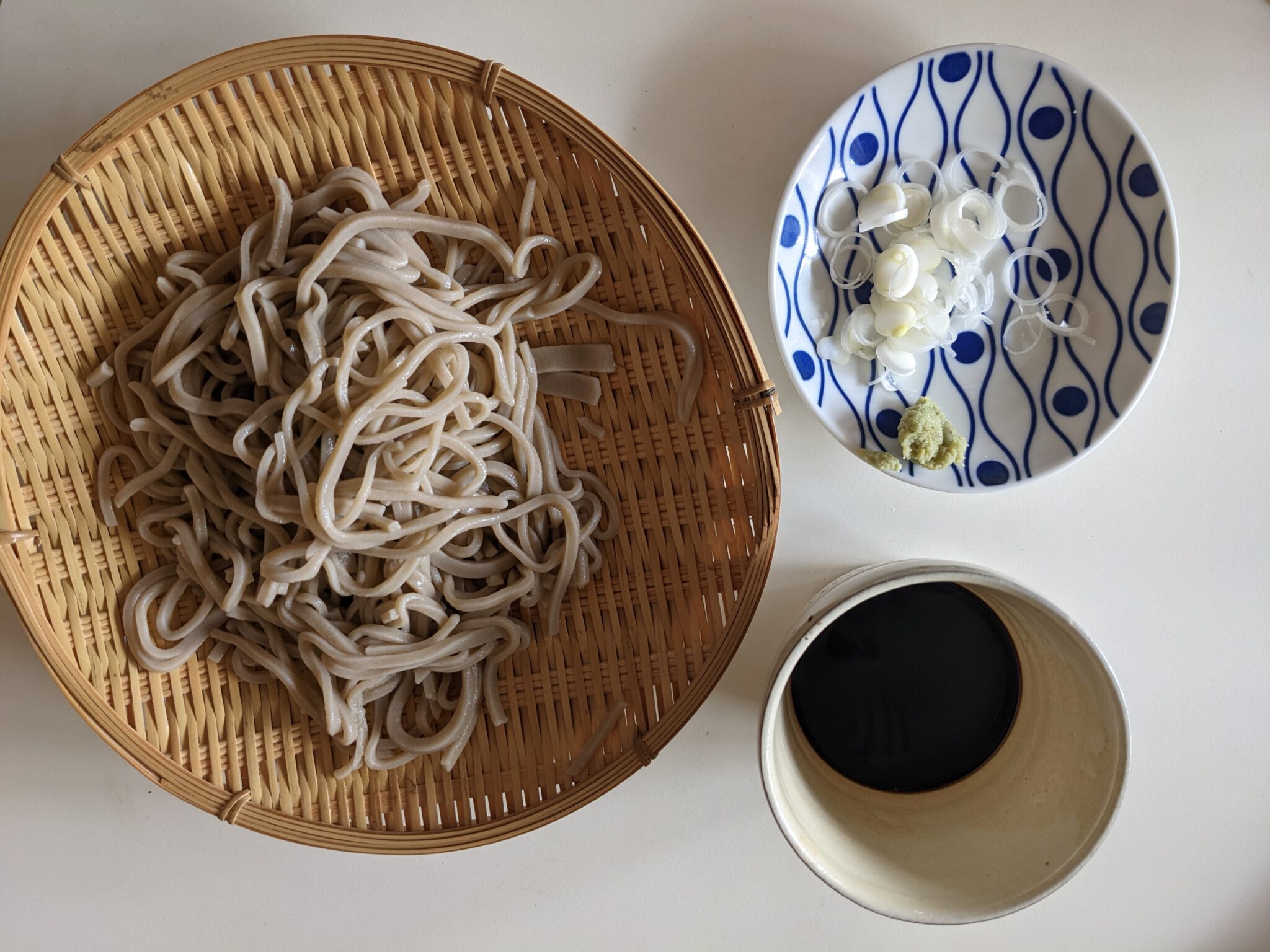After nearly two and a half years, I finally was able to make soba again this past Saturday with the Nihonbashi Konanokai (日本橋粉の会). The group had made soba a month or so ago, but I was in Oregon at the time. There were only ten of us this time, down from the usually fifteen or twenty people. And while we did have a small party after finishing making soba, we did not eat any of our production. There was one new person, a woman. Women usually make up about half the attendees, making soba a very gender-neutral activity.
I made my noodles with flour from Horokonai, Hokkaidō, the number one soba producing area in Japan. I had a bit of trouble remembering what all to do, but my batch ended up turning out okay. It wasn’t just that I had forgotten how to do some of the steps involved, but also that my body had forgotten the movements that you physically remember. I needed a bit of reminding a couple of times, but overall, there were no major disasters such as tearing the rolled-out sheet of soba. The biggest problem for me was having to wear a mask inside a hot room. Sweat kept pouring into my eyes and down my face, making it difficult to see. And I couldn’t wipe my face as my fingers were coated with sticky soba. But by the end it had pretty much all come back to me. Next month’s soba should be easier to make.

One interesting thing worth mentioning was that the uchiko, the very fine flour used to coat the table and the sheet of soba before folding so it doesn’t stick, was from China and America. If it is America that would mean from eastern Washington state, the only place where soba is grown for export to Japan. It is something relatively new, and this was the first time I have seen it. The soba farming is a joint effort between Washington State University and a Japanese trading company and of course the farmers who are now able to raise one more quick maturing crop on land that would otherwise be waiting for wheat to be planted. Unfortunately for Americans who might want to make their own soba noodles, pretty much 100% of the harvest is exported to Japan, leaving little behind in the states. Most soba used for noodles in the US is imported from Japan.
